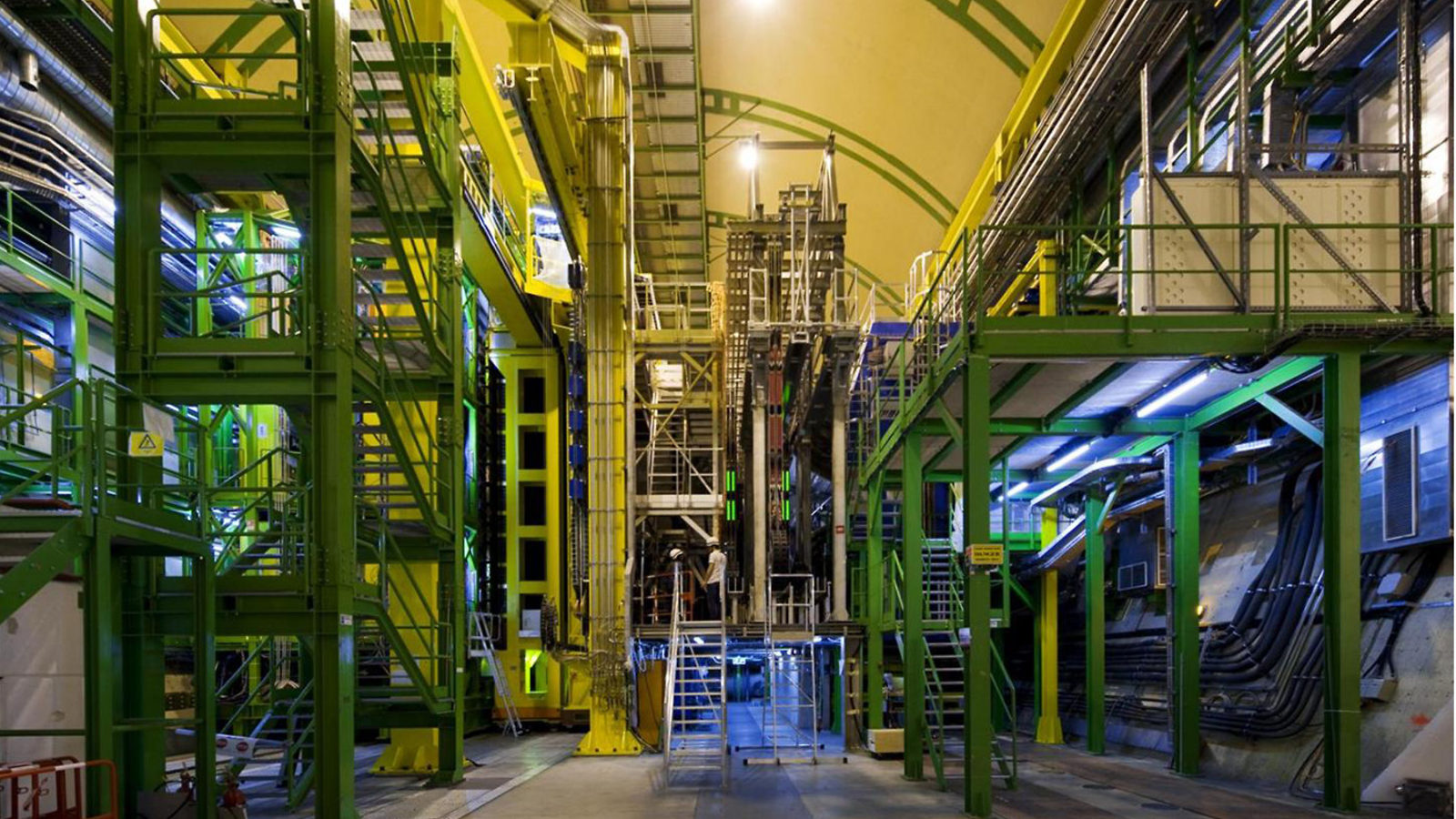It’s quadruplets! Syracuse University researchers on the LHCb experiment confirmed the existence of a new four-quark particle and serendipitously discovered three of its siblings.
Quarks are the solid scaffolding inside composite particles like protons and neutrons. Normally quarks come in pairs of two or three, but in 2014 LHCb researchers confirmed the existence four-quark particles and, one year later, five-quark particles.
The particles in this new family were named based on their respective masses, denoted in mega-electronvolts: X(4140), X(4274), X(4500) and X(4700). Each particle contains two charm quarks and two strange quarks arranged in a unique way, making them the first four-quark particles composed entirely of heavy quarks. Researchers also measured each particle’s quantum numbers, which describe their subatomic properties. Theorists will use these new measurements to enhance their understanding of the formation of particles and the fundamental structures of matter.
“What we have discovered is a unique system,” says Tomasz Skwarnicki, a physics professor at Syracuse University. “We have four exotic particles of the same type; it’s the first time we have seen this and this discovery is already helping us distinguish between the theoretical models.”
Evidence of the lightest particle in this family of four and a hint of another were first seen by the CDF experiment at the US Department of Energy’s Fermi National Accelerator Lab in 2009. However, other experiments were unable to confirm this observation until 2012, when the CMS experiment at CERN reported seeing the same particle-like bumps with a much greater statistical certainty. Later, the D0 collaboration at Fermilab also reported another observation of this particle.
“It was a long road to get here,” says University of Iowa physicist Kai Yi, who works on both the CDF and CMS experiments. “This has been a collective effort by many complementary experiments. I’m very happy that LHCb has now reconfirmed this particle’s existence and measured its quantum numbers.”
The US contribution to the LHCb experiment is funded by the National Science Foundation.
LHCb researcher Thomas Britton performed this analysis as his PhD thesis at Syracuse University.
“When I first saw the structures jumping out of the data, little did I know this analysis would be such an aporetic saga,” Britton says. “We looked at every known particle and process to make sure these four structures couldn’t be explained by any pre-existing physics. It was like baking a six-dimensional cake with 98 ingredients and no recipe—just a picture of a cake.”
Even though the four new particles all contain the same quark composition, they each have a unique internal structure, mass and their own sets of quantum numbers. These characteristics are determined by the internal spatial configurations of the quarks.
“The quarks inside these particles behave like electrons inside atoms,” Skwarnicki says. “They can be ‘excited’ and jump into higher energy orbitals. The energy configuration of the quarks gives each particle its unique mass and identity.”
According to theoretical predictions, the quarks inside could be tightly bound (like three quarks packed inside a single proton) or loosely bound (like two atoms forming a molecule.) By closely examining each particle’s quantum numbers, scientists were able to narrow down the possible structures.
“The molecular explanation does not fit with the data,” Skwarnicki says. “But I personally would not conclude that these are definitely tightly bound states of four quarks. It could be possible that these are not even particles. The result could show the complex interplays of known particle pairs flippantly changing their identities.”
Theorists are currently working on models to explain these new results—be it a family of four new particles or bizarre ripple effects from known particles. Either way, this study will help shape our understanding of the subatomic universe.
“The huge amount of data generated by the LHC is enabling a resurgence in searches for exotic particles and rare physical phenomena,” Britton says. “There’s so many possible things for us to find and I’m happy to be a part of it.”



